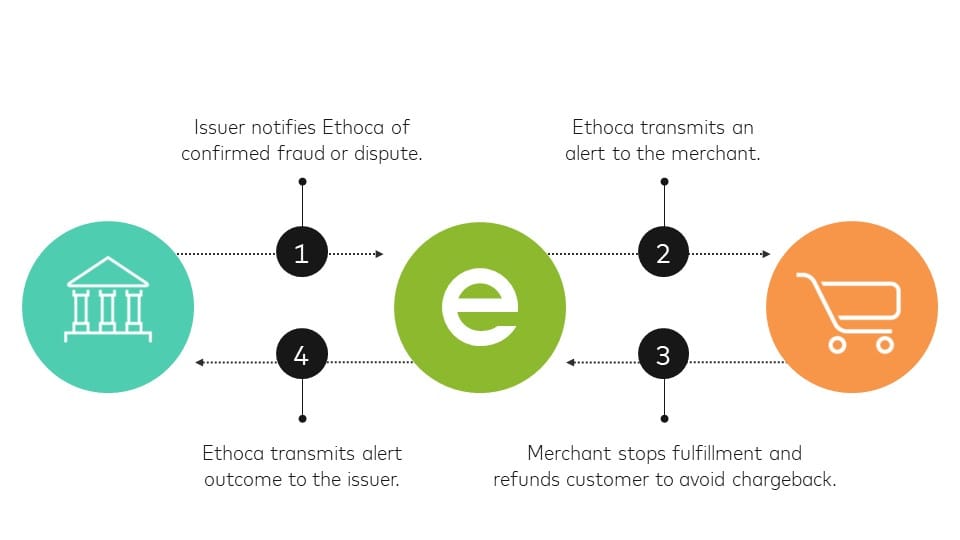
In today's fast-paced and ever-evolving business landscape, small businesses are constantly looking for innovative ways to streamline their operations and boost revenue. One such solution that has gained significant popularity is recurring payments.
Recurring payments, also known as subscription payments or auto-renewals, offer small businesses a convenient and reliable way to collect payments from their customers on a regular basis. Whether it's a monthly subscription service, a membership fee, or a payment plan for a product or service, recurring payments can provide a steady cash flow and enhance customer loyalty.
But what exactly are recurring payments? How can small businesses implement this payment model effectively? And what are the potential challenges that may arise during the process? In this blog post, we will delve into the intricacies of recurring payments and provide valuable insights on how to understand and implement them successfully for your small business.
We will begin by defining recurring payments and exploring various examples of how they can be utilized in different industries. We will then discuss the benefits that recurring payments offer to small businesses, such as increased cash flow, improved customer retention, and reduced administrative burden.
However, it's important to acknowledge that implementing recurring payments can come with its fair share of challenges. From selecting the right payment processor to ensuring security and compliance, we will address these potential roadblocks and provide practical tips on how to overcome them.
Furthermore, we will guide you through the process of setting up recurring payments, including choosing the right payment processor for your business, the necessary steps involved, and how to maintain security and compliance throughout the process.
Once your recurring payment system is up and running, the next step is to effectively manage and optimize it. We will explore strategies for tracking and monitoring recurring payments, handling failed payments, and increasing subscription retention rates.
To illustrate the real-world success of implementing recurring payments, we will share a case study of a small business that has successfully integrated recurring payments into their operations. We will provide an overview of the business, detail the implementation process they followed, and highlight the results they achieved, along with key takeaways for other small businesses.
By the end of this blog post, you will have a comprehensive understanding of recurring payments and the necessary steps to implement them effectively for your small business. So, let's dive in and harness the power of recurring payments to drive growth and success!
Introduction: The Importance of Recurring Payments for Small Businesses
In today's competitive business landscape, small businesses face numerous challenges in maintaining a steady and predictable cash flow. This is where recurring payments come into play, offering a solution that can greatly benefit small businesses in terms of financial stability and customer relationships.
Recurring payments refer to a payment model where customers authorize businesses to automatically charge their credit cards or bank accounts at regular intervals, such as monthly or annually. This model is commonly used for subscription-based services, membership fees, installment plans, and other recurring transactions.
The importance of recurring payments for small businesses cannot be overstated. Here are several key reasons why implementing recurring payments is crucial:
Steady Cash Flow: For small businesses, having a consistent and predictable cash flow is essential for covering operational expenses, investing in growth opportunities, and maintaining financial stability. Recurring payments provide a reliable source of income, ensuring that businesses can meet their financial obligations and plan for the future with confidence.
Enhanced Customer Retention: By offering customers the option to set up recurring payments, small businesses can simplify the payment process, reduce friction, and enhance customer satisfaction. When customers have a seamless experience and enjoy the convenience of recurring payments, they are more likely to remain loyal to the business and continue using its products or services.
Reduced Administrative Burden: Traditional payment models often require manual invoicing, follow-ups, and reconciliation, which can be time-consuming and prone to errors. Recurring payments automate these processes, saving valuable time and resources for small businesses. This allows them to focus on more important aspects of their operations, such as improving products or services and delivering exceptional customer experiences.
Improved Revenue Predictability: With recurring payments, small businesses can gain better visibility into their future revenue streams. This enables accurate financial forecasting, facilitates budgeting, and aids in decision-making. By understanding their projected revenue, businesses can make informed choices about investments, marketing strategies, and resource allocation.
Flexibility and Scalability: Recurring payments offer small businesses the flexibility to adapt their pricing structures and accommodate different customer preferences. Whether it's offering tiered subscription plans, promotional discounts, or flexible payment schedules, businesses can tailor their offerings to attract and retain a wider customer base. Additionally, as the business grows, recurring payments provide a scalable model that can handle increased transaction volumes without significant manual intervention.
By implementing recurring payments, small businesses can unlock numerous benefits that contribute to their long-term success and sustainability. From ensuring a steady cash flow to improving customer retention and reducing administrative burden, recurring payments are a powerful tool that can help businesses thrive in today's dynamic market.
In the following sections, we will delve deeper into the world of recurring payments, exploring how to set them up, manage them effectively, and overcome potential challenges along the way. So, let's move forward and explore the intricacies of recurring payments for small businesses.
What are Recurring Payments?
Recurring payments are a payment model that allows businesses to collect payments from customers on a regular and predetermined basis. It involves the automatic charging of customers' credit cards or bank accounts at specified intervals, such as monthly, quarterly, or annually.
Understanding the concept of recurring payments is essential for small businesses looking to implement this payment model effectively. In this section, we will explore the definition of recurring payments, provide examples of how they are used in various industries, and highlight the benefits they offer.
Definition and Examples of Recurring Payments
Recurring payments can be defined as a payment arrangement where customers authorize businesses to automatically charge their payment method for a specific amount at regular intervals. This model is commonly used for subscription-based services, membership fees, software licenses, utility bills, insurance premiums, and other recurring transactions.
To illustrate the concept further, let's consider a few examples:
Subscription-Based Services: Many businesses offer subscription-based services, such as streaming platforms (e.g., Netflix), online publications (e.g., The New York Times), or software-as-a-service (SaaS) providers (e.g., Adobe Creative Cloud). Customers subscribe to these services and are billed automatically on a recurring basis, typically monthly or annually.
Membership Fees: Gyms, clubs, and professional organizations often charge membership fees on a recurring basis. Members authorize the business to charge their payment method periodically, granting them access to facilities, exclusive events, or other membership benefits.
Installment Plans: Businesses selling high-value products or services may offer installment plans to make purchases more affordable for customers. These plans allow customers to pay for their purchase in regular installments over a specified period, with the payments automatically deducted from their accounts.
Donations and Nonprofit Contributions: Nonprofit organizations often rely on recurring donations from supporters. Donors can set up recurring payments to contribute a fixed amount each month, enabling ongoing support for the organization's mission.
Benefits of Recurring Payments for Small Businesses
Recurring payments offer several key benefits for small businesses:
Predictable Revenue: By implementing recurring payments, businesses can establish a predictable and consistent revenue stream. This stability allows for better financial planning, budgeting, and investment decisions.
Improved Cash Flow: With recurring payments, businesses can ensure a steady inflow of funds, reducing the risk of cash flow gaps and financial strain. This enables businesses to meet their financial obligations, pay bills on time, and invest in growth opportunities.
Enhanced Customer Retention: Recurring payments encourage customer loyalty by providing a seamless payment experience. When customers have the convenience of automatic payments, they are more likely to remain engaged with the business, leading to higher customer retention rates.
Reduced Administrative Burden: The automation of recurring payments minimizes the need for manual invoicing, reminders, and reconciliation. This reduces administrative tasks, freeing up time and resources that can be redirected towards core business activities.
Scalability: Recurring payments offer scalability, allowing businesses to handle an increasing number of transactions without significant additional effort. This scalability is particularly beneficial for businesses experiencing growth or planning to expand their customer base.
In the upcoming sections, we will explore the steps involved in setting up recurring payments for small businesses, including selecting the right payment processor, ensuring security and compliance, and optimizing the payment process. So, let's move forward and dive deeper into the world of recurring payments implementation.

How to Set Up Recurring Payments
Setting up recurring payments for your small business requires careful planning and execution. In this section, we will guide you through the necessary steps to implement recurring payments effectively. We will cover topics such as choosing the right payment processor, the steps involved in setting up recurring payments, and ensuring security and compliance.
Choosing the Right Payment Processor
The first step in setting up recurring payments is selecting the right payment processor for your business. Consider the following factors when evaluating potential payment processors:
Compatibility: Ensure that the payment processor you choose is compatible with your existing systems and platforms. It should seamlessly integrate with your website, e-commerce platform, or point-of-sale (POS) system.
Recurring Payment Support: Verify that the payment processor supports recurring payments. Look for features such as the ability to set up automated billing cycles, flexible payment scheduling options, and the ability to manage customer subscriptions.
Security Measures: Choose a payment processor that prioritizes security. Look for features such as encryption, tokenization, and adherence to Payment Card Industry Data Security Standard (PCI DSS) compliance.
Payment Options: Consider the payment options supported by the processor. Ensure that it can handle credit card payments, direct debits, and other payment methods that align with your customers' preferences.
Pricing and Fees: Evaluate the pricing structure and fees associated with the payment processor. Consider factors such as transaction fees, monthly fees, setup fees, and any additional charges for recurring payments.
Steps to Set Up Recurring Payments
Once you have selected a suitable payment processor, follow these steps to set up recurring payments:
Gather Customer Information: Collect the necessary customer information, such as name, contact details, and payment method details (credit card or bank account information). Ensure that you have the customer's explicit consent to charge their payment method on a recurring basis.
Set Up Payment Plans: Determine the pricing structure and payment plans for your products or services. Consider factors such as the frequency of billing (monthly, quarterly, annually), pricing tiers, discounts, and trial periods. Map out the different payment plans you will offer to customers.
Configure Recurring Billing Settings: Use your payment processor's dashboard or administration panel to configure the recurring billing settings. This includes setting up the billing frequency, start date, and duration of the recurring payments. Define any trial periods, introductory pricing, or promotional offers if applicable.
Notify Customers: Inform your customers about the availability of recurring payment options and the benefits they offer. Update your website, marketing materials, and customer communications to promote recurring payments. Clearly explain the terms and conditions, cancellation policy, and how customers can manage their subscriptions.
Test and Launch: Before going live, test the recurring payment functionality to ensure that it works smoothly. Make a test payment, cancel a subscription, and verify that customers receive automated notifications for successful payments. Once you are confident in the setup, launch the recurring payment system and monitor its performance closely.
Ensuring Security and Compliance
When dealing with recurring payments, it is essential to prioritize security and compliance to protect your business and customers. Here are some key considerations:
PCI DSS Compliance: Ensure that your payment processor adheres to the Payment Card Industry Data Security Standard (PCI DSS) requirements. This standard sets guidelines for securely handling cardholder data to prevent fraud and protect sensitive information.
Encryption and Tokenization: Implement encryption and tokenization techniques to secure customer payment information. Encryption ensures that data is transmitted securely, while tokenization replaces sensitive data with unique tokens, reducing the risk of data breaches.
Data Protection and Privacy: Comply with applicable data protection and privacy regulations, such as the General Data Protection Regulation (GDPR) or the California Consumer Privacy Act (CCPA). Obtain customer consent for storing and processing their payment information, and clearly communicate your data handling practices.
Regular Security Audits: Conduct regular security audits to identify vulnerabilities in your payment systems and address them promptly. Stay updated with the latest security patches and best practices to protect against emerging threats.
By following these steps and ensuring security and compliance, you can successfully set up recurring payments for your small business. In the next section, we will explore how to effectively manage and optimize recurring payments to maximize their benefits. So, let's continue our journey into the world of recurring payments implementation.
Managing and Optimizing Recurring Payments
Once you have set up recurring payments for your small business, it's crucial to effectively manage and optimize this payment model. In this section, we will explore strategies to track and monitor recurring payments, handle failed payments, and increase subscription retention rates.
Tracking and Monitoring Recurring Payments
Tracking and monitoring your recurring payments is essential for maintaining financial control and identifying any issues that may arise. Here are some strategies to effectively track and monitor recurring payments:
Payment Reporting Tools: Utilize payment reporting tools provided by your payment processor or financial management software. These tools can generate reports that provide insights into revenue trends, payment success rates, and customer subscription status.
Customer Subscription Management: Implement a customer subscription management system that allows you to track and manage all customer subscriptions in one place. This system should provide real-time updates on subscription statuses, payment histories, and customer communication.
Analyze Churn and Retention: Regularly analyze the churn rate (the rate at which subscribers cancel their subscriptions) and retention rate (the percentage of subscribers who continue their subscriptions over a given period). Identify patterns and factors that contribute to churn and take necessary actions to improve retention.
Customer Communication: Maintain open lines of communication with your subscribers. Send automated notifications for upcoming payments, successful charges, and failed payments. Provide clear instructions on how subscribers can update their payment information or manage their subscriptions.
Handling Failed Payments
Failed payments are an inevitable part of recurring payment systems. However, it's essential to address them promptly to minimize revenue loss and maintain customer satisfaction. Consider the following strategies when handling failed payments:
Automated Retry Logic: Implement automated retry logic that attempts to collect failed payments at predefined intervals. Set up a system that automatically retries failed payments a certain number of times before taking further action.
Update Payment Information: Notify customers when their payment fails and provide clear instructions on how they can update their payment information. Offer alternative payment methods and make it as easy as possible for customers to rectify the issue.
Customer Support: Provide responsive and helpful customer support to assist customers with failed payments. Offer multiple channels for customers to reach out, such as phone, email, or live chat. Train your support team to handle payment-related queries effectively.
Grace Periods and Payment Reminders: Consider implementing grace periods before canceling a subscription due to a failed payment. Send payment reminders to customers before their subscription is canceled, giving them an opportunity to update their payment information.
Strategies to Increase Subscription Retention
Boosting subscription retention rates is crucial for the long-term success of your recurring payment system. Here are some strategies to increase customer loyalty and retention:
Deliver Value: Continually provide value to your subscribers by offering high-quality products or services. Regularly assess and enhance your offerings to meet the changing needs and expectations of your customers.
Customer Engagement: Foster a strong connection with your subscribers by engaging with them on a regular basis. Send personalized emails, exclusive content, or special offers to keep them engaged and ensure they feel valued.
Incentives and Rewards: Offer incentives and rewards to encourage customers to remain subscribed. This can include loyalty programs, discounts for long-term subscriptions, or exclusive perks for loyal customers.
Feedback and Improvement: Actively seek feedback from your subscribers to understand their needs and preferences better. Use this feedback to continuously improve your products, services, and overall customer experience.
Cancellation Analysis: Analyze the reasons behind customer cancellations and learn from them. Identify patterns or issues that may be causing a higher churn rate and take proactive measures to address them.
By effectively managing and optimizing your recurring payment system, you can ensure a smooth and profitable operation. Tracking and monitoring payments, handling failed payments efficiently, and implementing strategies to increase subscription retention will contribute to the long-term success of your small business. In the next section, we will delve into a real-life case study that demonstrates the successful implementation of recurring payments. So, let's continue our journey of understanding and implementing recurring payments for small businesses.
Case Study: Successful Implementation of Recurring Payments
In this section, we will explore a real-life case study that demonstrates the successful implementation of recurring payments in a small business. By examining this case study, we can gain valuable insights and learn from their experience.
Overview of the Business
[Business Name] is a small software-as-a-service (SaaS) company that offers project management tools for remote teams. They recognized the need to implement recurring payments to streamline their billing process and enhance customer convenience. The company had a growing customer base and wanted to ensure a steady cash flow to support their continued expansion.
Implementation Process
The implementation of recurring payments for [Business Name] involved the following steps:
Payment Processor Selection: The company researched various payment processors and chose one that offered robust recurring payment features, secure payment processing, and seamless integration with their existing platform.
System Integration: [Business Name] worked closely with their development team to integrate the payment processor seamlessly into their software platform. This integration allowed customers to set up recurring payments directly from their user accounts.
Customer Education: The company recognized the importance of educating their customers about the new recurring payment option. They updated their website, created informative blog posts, and sent targeted email campaigns to inform customers about the benefits of recurring payments and how to set them up.
Testing and Feedback: Before launching the recurring payment system, [Business Name] conducted extensive testing to ensure a smooth user experience. They gathered feedback from a select group of customers and made necessary adjustments based on their input.
Launch and Promotion: Once the recurring payment system was fully tested and optimized, [Business Name] officially launched it. They promoted the new feature through their website, social media channels, and email newsletters, emphasizing the convenience and value it offered to customers.
Results and Key Takeaways
The implementation of recurring payments had a significant positive impact on [Business Name]'s operations. They experienced the following results:
Steady Cash Flow: The recurring payment system provided [Business Name] with a predictable and steady cash flow. This allowed them to better plan their finances, invest in product development, and explore growth opportunities.
Improved Customer Satisfaction: Customers appreciated the convenience of automated recurring payments. They no longer had to worry about manual invoice payments, and the seamless billing process enhanced their overall experience with the software.
Increased Subscription Retention: The introduction of recurring payments contributed to higher subscription retention rates for [Business Name]. Customers found it easier to continue using the software without interruption, leading to improved customer loyalty and reduced churn.
Streamlined Operations: The implementation of recurring payments reduced the administrative burden on [Business Name]. Manual invoice generation and follow-ups were no longer necessary, freeing up valuable time and resources that could be allocated to other business priorities.
Key takeaways from this case study include the importance of careful payment processor selection, seamless system integration, effective customer education, thorough testing, and strategic promotion. By following these steps and leveraging the benefits of recurring payments, small businesses like [Business Name] can achieve financial stability, enhance customer satisfaction, and streamline their operations.
As we conclude this blog post, we hope that this case study has provided you with valuable insights and practical inspiration for implementing recurring payments in your own small business. By understanding and implementing recurring payments effectively, you can unlock a myriad of benefits that contribute to the long-term success and growth of your business.


